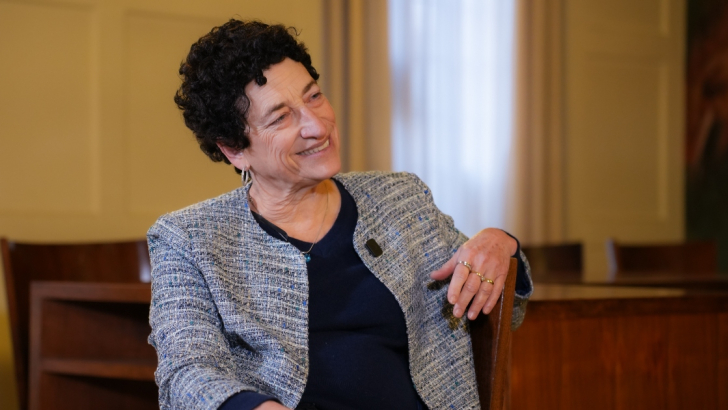When “with you” isn't safe: Danger and protection in one’s significant relationships

In the past decades, psychological literature has addressed the issue of the quality of primary relationships, considered the backbone of the development of one’s self, one’s emotional skills, one’s ability to build other relationships that are capable of promoting well-being and one’s ability to adapt throughout existence. Such relationships are defined as “primary” because they represent one’s "first" experiences of forming relationships with other people representing the reference adults during childhood - that is, mothers, fathers, or other adults having a caretaking role for newborns and children. Furthermore, they are defined as such because they represent our basis for structuring a model, a relational matrix (as defined by Daniel Stern) that pushes us to recreate similar relationships with different people that we get to know later on in life.
We are talking about significant relationships - that is, relationships built with people who have a central role in children's caretaking, and who represent stable reference points during one’s growth. However, this process can also be extended to relationships within larger groups in which the individual is inserted, or to virtual relationships, thus constituting the basis of some of the dynamics and critical issues which were previously described in other issues of this series.
As confirmed by several research data, the quality of relational experience in the early stages of one’s life generates a "form" - a matrix (working as the “ mother tongue” of our relational skills), on the basis of which we tend to reproduce similar ways of meeting others, which in turn will lead us to form relationships having the same quality as the ones we experienced at the beginning of our life. The matrix is a "mold", something that remains unchanged, maintaining its shape unaltered over time and across different situations. However, the matrix may be subject to some changes and modifications even if limited to the marginal aspects that characterize it. For example, the hammers with the letters of old typewriters (such as the LETTER 22 by Montanelli) work exactly as these matrices: their iron shape does not change over time, so much that the shape of each of the characters can constitute a recognizable feature of the machine itself. Despite this, it is possible to combine each letter into different words, sentences, verses, words of love or words of hate, bright colors like red, or dark ones like black. In short, each matrix contains a distinctive trait of stability and repetitiveness over time and margins of modifiability which are wider the better the matrix functions. Such is the ability to build new and subsequent relationships throughout one’s life.
Therefore, the quality of primary relationships also has a long-term impact on the well-being of an individual - and a central criterion concerning this is represented by the degree of protection experienced: having felt protected constitutes what John Bowlby defined a safe base, which works as a factor in safeguarding oneself and building one's relationships. In fact, the perception of security becomes an internal characteristic of the individual, which is internalized and, as such, leads us to recreate similar conditions - seeking safe relationships in which we feel welcomed, understood in our fragility, and protected in moments of difficulty. Having this security also enables us to protect others, not to threaten others, and to make the other person feel safe in the relationship - be it our child, parent, or partner. Conversely, having experienced a sense of danger in primary relationships is an experience that has made us feel insecure, not worthy of having our needs listened to, and incapable of obtaining protection, and comforting and beneficial security. The internalization of this early experience (i.e., an insecure relational matrix) can lead people to not be able to immediately and adequately recognize the protective or dangerous characteristics of a relationship they are just starting, or in which they find themselves, thus possibly leading them to confuse such polarities. Here is an example: my partner wants to know at all times where I am and what I am doing. Two possible scenarios ensue: on one hand, I may feel protected, perhaps not fully understanding that this type of request represents a control strategy in the relationship; on the other hand, I may feel a
sense of danger due to all this attention (and also due to the fact that I am not withdrawing or fleeing from it), so the other person's requests end up sounding excessive. Obviously, it is not the fault of those who experience this type of relational confusion (although the blame is sometimes attributed to the victims) but a mechanism that must be recognized for individuals to escape from it.
Furthermore, the lack of primary security can make an individual incapable of providing protection to others, thus becoming the very source of relational danger through lack of care, acts of control and/or aggressiveness, and ultimately violence up to extreme forms. These are not always explicit or grave forms of danger like the ones we are witnessing massively and repeatedly but are more often subtle, implicit, unexpressed relational dangers that alter the system of protection that should always characterize significant relationships with other people. Some examples are repeated criticism in an intimate relationship, behaviors that threaten the stability of the relationship (“I am unsure about the feelings I have for you”), controlling behaviors (“Tell me where you are going, who you are going out with, when do you plan to be back, etc.”).
These mechanisms are transversal to people regardless of gender, as they intercept the early intimacy of everyone's bonds, and describe processes that happen before and on different (but complementary) levels compared to the construction of group, social, and cultural identity (as we have already discussed), thus mixing with it to the point of destruction of oneself and of others within a relationship.
In fact, all research in this area suggests without any doubt that the presence of protection and the absence of danger is a founding and fundamental condition in creating significant relationships that function as a basis for the construction of new relationships - which are in turn free from danger and based on safety and protection: from a certain point of view, it seems like there is no alternative - internalized safety favors the possibility of recognizing relational danger and avoiding it because it is harmful and opposite to the very concept of relationship. Internalized protection also allows us not to be a source of danger in our relationships and to build them by recognizing the other, their needs, and their well-being. This is true for all significant relationships, but also for significant relationships that are also intimate such as couples, in which these dynamics are unavoidable, and sometimes generate the harmful and risky dynamics that are the object of this series.
So, is there no chance of introducing changes or improvements into this mechanism? That is not the case, but it is certainly effortful: people with less solid foundations in terms of danger/protection in relationships can definitively have additional difficulties in building "good relationships" precisely because their matrix can confuse them, not be so clear, supportive, or unique in making them recognize in themselves and in other people the adequate position of these two opposites and the absolute need to always place themselves on the axis of protection every time they are building or living in a relationship, whatever that is. Building safety for ourselves and for the people in our lives is therefore possible (although in some cases tiring) and often requires great commitment as it is not automatic, but there are ways, and they are feasible. In this context, society also plays a fundamental role in "correcting" processes both spontaneous and learned from our primary relationships. For this reason, research insists on the importance of comprehensive emotional and sexual education that teaches respect and quality of relationships, in the creation of work policies that open up to diversity and inclusion.









